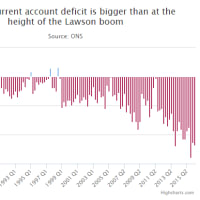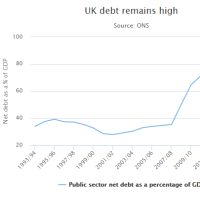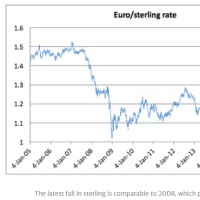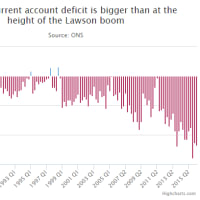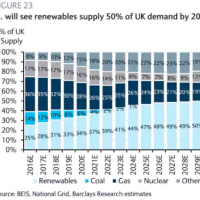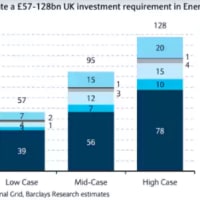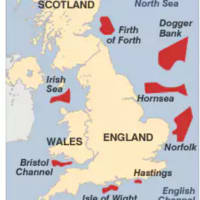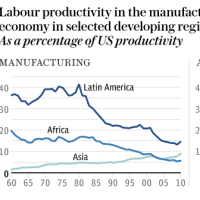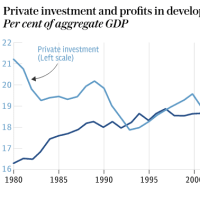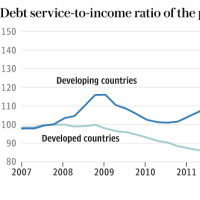Bernanke attacked for 'too low’ interest rates
(バーナンキFRB議長に金利「低過ぎ」との批判)
By Ambrose Evans-Pritchard
Telegraph: 8:35PM BST 16 Sep 2012


(バーナンキFRB議長に金利「低過ぎ」との批判)
By Ambrose Evans-Pritchard
Telegraph: 8:35PM BST 16 Sep 2012
The US Federal Reserve and central banks worldwide kept interest rates far too low in the build-up to the global credit bubble and may have caused much of the crisis, the world’s top watchdog has concluded.
欧州中央銀行と世界各国の中銀は、世界的な信用バブルが発生するまでの間、金利を極めて過剰な低水準に据え置き続け、それが今回の危機の大半を引き起こした可能性がある、との結論に世界最高の監視機関が達しました。
“Monetary policy on aggregate has been systematically accommodative globally since the early 2000s,” the Bank for International Settlements said in its quarterly report.
「2000年代初頭より、総合的に金融政策は世界的、組織的に協調的だった」と国際決済銀行は四半期報告書に記しました。
The BIS, the “bank of central bankers”, said loose policy may have been “a potential cause in the build-up of the financial imbalances before the global financial crisis”.
「中銀の銀行」である国際決済銀行は、金融緩和策が「世界的金融危機に至る財政的不均衡の増加の潜在的な原因」だった可能性がある、としています。
While couched in diplomatic terms, the report refutes claims by Fed chairman Ben Bernanke that the key driver of the credit bubble was a worldwide tsunami of excess capital from Asia and surplus regions, the so-called “savings glut”.
外交的な表現ではありますが、本報告書は、信用バブルの主な推進力は、アジアおよび黒字国から世界各国に津波のように押し寄せた過剰資本、いわゆる「貯蓄過剰」である、というベン・バーナンキFRB議長の主張を否定しているのです。
The BIS said central banks, mostly in emerging economies, have amassed $18 trillion (£11 trillion) in assets or 30pc of global GDP, a fourfold increase in a decade. While this did fuel the global asset boom, it did not absolve Western central banks of their own responsibility.
国際決済銀行によれば、中銀(主に新興諸国の中銀)は世界のGDPの30%に相当する18兆ドルもの資産を蓄積したとのことで、10年間で4倍増したことになります。
これが世界的な資産バブルを煽ったのは確かですが、西側諸国の中銀の責務を免ずることはありませんでした。
Interest rates were 1pc or 2pc too low for year after year in advanced economies, based on an analysis of inflation and the output gap, known as the “Taylor rule”.
Taylor Ruleとして知られるインフレ率とアウトプット・ギャップの分析に基づくと、先進国では何年間も金利が1-2%低過ぎる状態が続いていました。
Policy was even looser in emerging economies where rates were 5pc too low by 2008, typically because they had pegged their currencies to the dollar in one way or another. They were importing a monetary policy that was out of step with the needs of fast-growing tiger economies.
新興国では2008年まで5%も低い、先進国を上回る緩和策が取られていました。
自国通貨を何らかの形でドルに固定していたことが一般的な原因です。
これらの国は急成長するタイガー・エコノミーのニーズにそぐわない金融政策を輸入していたのです。
The report did not name institutions, but it clearly meant the Fed and the European Central Bank. Both ran negative real interest rates as the boom gathered pace.
同報告書は名指ししていませんが、明らかにFRBと欧州中央銀行を意識しています。
両中銀はバブルが加速する中でもネガティブ実質金利を継続しました。
The BIS criticised the ideology of the Bernanke Fed that central banks should let asset bubbles run their course, confining their role to cleaning up afterwards. This created an “asymmetric response pattern” or moral hazard. “Central banks need to reconsider their monetary policy frameworks with a view to ensuring symmetry over the financial cycle,” it said.
中銀は資産バブルを邪魔すべきではなく、その後片付けに専念すべきである、というバーナンキFRBのイデオロギーを、国際決済銀行は批判しました。
これは「非対称な反応パターン」、またはモラル・ハザードを生み出しました。
「中銀は景気の循環が対象的になるように金融政策の枠組みを検討し直す必要がある」とのことです。
Separately, the BIS reported a 30pc plunge in issuance of international debt securities to $1,828bn in the second quarter, largely due to frantic deleveraging in Europe. Eurozone financial groups repaid a net €110bn from April to June. The US and emerging markets cut new issuance sharply as the global slowdown gathered pace.
また、>ヨーロッパでの必死のデレバレッジを主な原因として、第2四半期の国債発行額は1兆8,280億ドルへと30%も激減したと国際決済銀行は報告しました。
4-6月期にユーロ圏の金融グループが返済した額は1,100億ユーロに上りました。
世界的な景気後退がペースを速めると、米国と新興市場は新規発行額を大幅に縮小しました。
The BIS said international banks withdrew a further $92bn from Greece, Ireland, Italy, Portugal and Spain, evidence that the ECB’s $1 trillion blitz of cheap lending to banks failed to unlock interbank funding.
国際決済銀行によれば、国際的な銀行がギリシャ、アイルランド、イタリア、ポルトガル、スペインから引き出した資金の総額は920億ドルに上っており、これはドラギ・バズーカが銀行間貸付の停滞を解消出来なかったという証拠とのことです。











